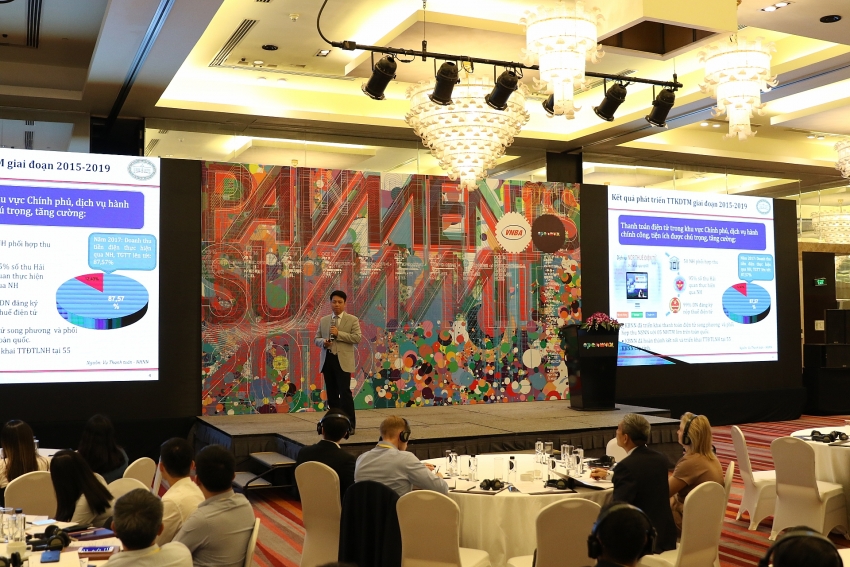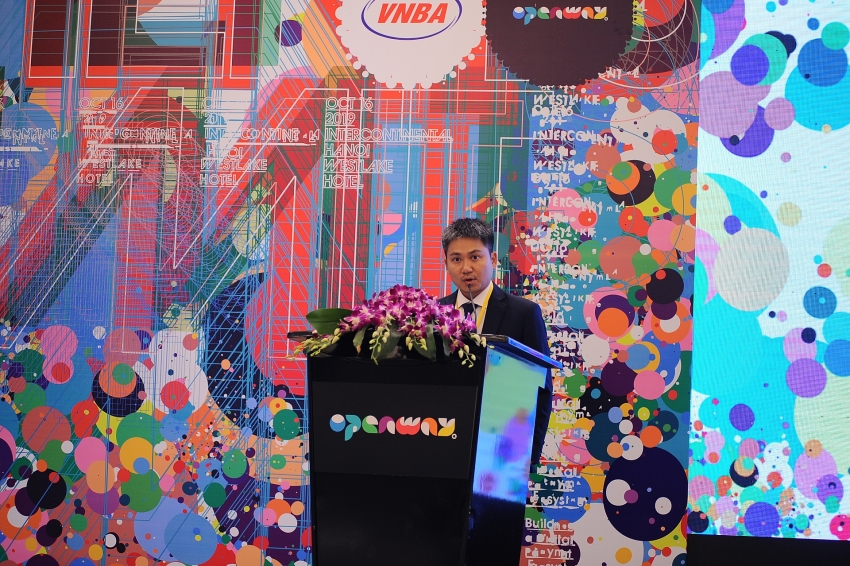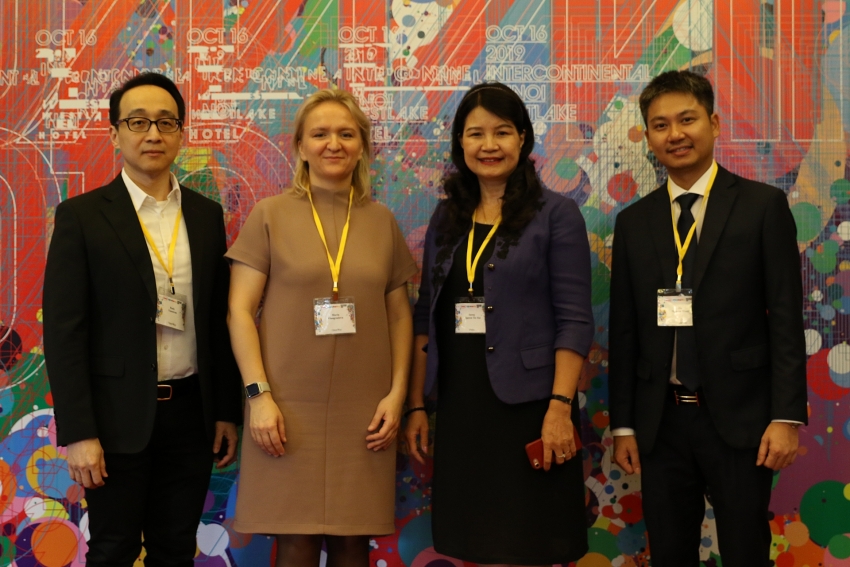Building a digital ecosystem for non-cash payment
 |
| The Payment Summit 2019 focused on building out the foundations for a synchronised digital payment ecosystem |
The Payment Summit 2019 themed “Building a digital payment ecosystem” organised by the Vietnam Banks Association and OpenWay Group drew the participation of hundreds of experts on October 16.
At the event, Pham Tien Dung, director general of the Payment System Department of the State Bank of Vietnam (SBV), confirmed that the non-cash payment ecosystem has already drawn great demand to cover payment needs in all areas of life.
“At present, we are no longer bothered by power-bill collectors, who used to knock on our doors while we were having dinner with our family. In addition to bills, we can pay for a lot of different costs via banking apps on the smartphone, like overheads, internet fees, TV cable subscription costs, tuition fees, shopping, and among others,” said Dung.
 |
| Nguyen Manh Ha, OpenWay Vietnam's country director |
In 2017, as much as 87.57 per cent of total power revenue was conducted via banks or e-wallet apps. Over the past years, banking services have become popular. The number of individual banking accounts has increased to 83.9 million (as of August 2019) from 69 million in 2017 and 60.2 million in 2015, while the proportion of adults holding a bank account rose to 63.7 per cent in 2018, from 52 per cent in 2015.
In public services, digital payment is also growing stronger with the joining of 50 banks. Thereby, 95 per cent of total customs revenue flows in via bank transfer, while 99 per cent of businesses register to pay taxes online.
To date, there are 32 units licensed by the SBV, 28 of which provide payment portal services and 29 of which provide e-wallet services. “Money transfers via mobile banking have already surpassed ATMs,” a representative of the SBV emphasised.
In fact, the number of internet and mobile banking transactions was 204 and 170 million in the second quarter of this year, rising by 60.6 and 109.5 per cent over the same period last year, and the value of transactions also increased remarkably.
“Mobile payment is a trend that supports new technologies like QR code, near field communication (NFC), tokenisation, and biometric authentication,” added Dung from the SBV.
 |
| OpenWay Group's board of directors |
As the first-ranking digital payment processing software by Gartner for almost ten years now and the leader in digital wallet software by Ovum in the last three years, OpenWay is the best choice for banks and financial organisations to provide card and digital payment solutions.
The WAY4 application developed by OpenWay has been applied by 135 banks, financial organisations, and payment intermediaries, switching companies, as well as telcos across Asia, Europe, the Americas, the Middle East, and Africa.
In Vietnam, 14 banks and financial organisations have already set up WAY4, including ACB, Military Bank, VP Bank, MSB, Seabank, Bao Viet Bank, PG Bank, HD Bank, Lotte Finance Vietnam, and ACS Vietnam (A-EON).
“The digital payment ecosystem based on modern software and applications for card and other payments enables customers to exercise transactions in only half a minute, which is very comfortable and safe. The most important is the digital payment ecosystem optimising the experience for customers and enabling them to change their payment behaviour,” Nguyen Manh Ha, OpenWay Vietnam's country director, said.
| Vietnam's banking development strategy by 2025, with vision to 2030, set the target to reduce the proportion of cash payments (against total payments) to a maximum of 10 per cent by 2020, and 8 per cent by 2025. However, after nearly six years of implementing Decree No.101/2012/ND-CP, this proportion has declined to 11 per cent only from 12.01 per cent at the end of 2018. The reason is the lack of synchronisation between payment options and good or service providers. |
What the stars mean:
★ Poor ★ ★ Promising ★★★ Good ★★★★ Very good ★★★★★ Exceptional
Related Contents
Latest News
More News
- Banks gear up for massive capital increases (December 18, 2025 | 17:04)
- Securing capital and efficiency for Vietnam’s 2026-2030 growth ambitions (December 17, 2025 | 10:00)
- Energy sector in need of blended finance mechanisms (December 17, 2025 | 09:00)
- Vietnam still has room to mobilise capital for sustainable growth (December 17, 2025 | 08:57)
- Long-term capital seen as key hurdle to green growth (December 16, 2025 | 08:00)
- Gold prices swing amid tax debate and import uncertainty (December 15, 2025 | 18:04)
- Agribank frames bank credit as catalyst for green growth (December 15, 2025 | 17:59)
- Vietnam’s green transition demands collective financial action (December 15, 2025 | 12:00)
- VIR workshop highlights capital and policy for sustainable development (December 15, 2025 | 11:00)
- Promoting digital assets initiative in Vietnam (December 13, 2025 | 09:30)

 Tag:
Tag:




























 Mobile Version
Mobile Version